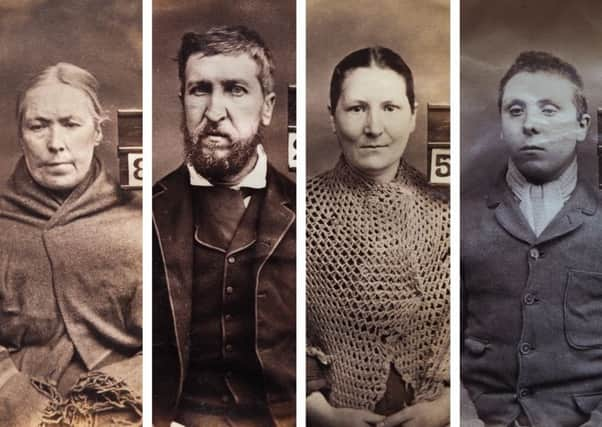Caught on film: the thieves, the housebreakers and the fraudsters of 19th Century Scotland


Now a rare collection of mugshots of those jailed for their crimes during the 1880s are to go on show for the first time.
The images were taken at HM General Prison in Perth just as the criminals were being released back into society.
Advertisement
Hide AdAdvertisement
Hide AdWith the album from Perth featuring more than 900 individuals - around a third of them women - the books served as a Who’s Who of convicts of the day and assisted police in tracking offenders as they moved around the country.
Most of the recorded offences would be judged petty by today’s standards, with the theft items such as book of Burn’s poetry, bottles of porter and a pair of trousers earning a stint in prison. Many of those appearing in court, however, had offended multiple times.
The photographs will go on show as part of the Granite Noir crime writing festival in Aberdeen this month.
Phil Astley, city archivist, said: “Such ‘mugshots’ were a relatively new technology for the time.
“In addition to its practical use in identifying individual criminals, the photography of prisoners may have been given impetus by theories of criminal physiology, such as individual criminals sharing certain facial or cranial characteristics.
“The frayed clothes of many of those featured hint at their low social status. At a time when portrait photography was in its infancy and most pictures of people were formal, studio images, this collection is a glimpse of a section of society that otherwise rarely features in images of the time”.
Women included in the album include Matilda Brown, who was found guilty of the assault and robbery of Italian seaman Angelo Moracen in a house in Lawson’s Wynd, Leith, in August 1881.
A story in The Scotsman detailed how Moracen was robbed of a sovereign, two shillings, a match box and a sleeve line.
Advertisement
Hide AdAdvertisement
Hide AdFor this, Brown was sentenced to 12 month’s imprisonment with her two male accomplices, who had been released from prison three days earlier, sentenced to five year’s penal servitude.
Also features in the album was Catherine O’Hara, who was described in The Scotsman as ‘an exceedingly miserable old woman’ after she appeared in court in February 1882 to plead guilty to stealing from a bleaching green.
She was sentenced to nine months in Perth with Ms O’Hara having 10 other convictions for offences committed over a two-year period.
Others who feature in the exhibition include a group of Glasgow teenagers convicted of stealing two plaids and a pair of trousers from a sale room in Govan.
Jane Paul, of Dundee, was jailed for 10 months after stealing a Free Church hymm book and a book of Robert Burns’ poems when drunk. Meanwhile, Margaret Robertson, 35, was jailed after stealing eighteen bottles of porter from a cellar in Strathbungo.
The case of James Fleming is also illuminated by the album with his offences deviating from usual low-level crimes committed by the Perth prison population.
Fleming, a director of the City of Glasgow Bank, was convicted for his part in “notorious” bank frauds of 1878. He was imprisoned for nine months with his crimes affecting up to 100 families.
Criminal Portraits, Central Library and The Lemon Tree, Aberdeen, February 22 - 24.